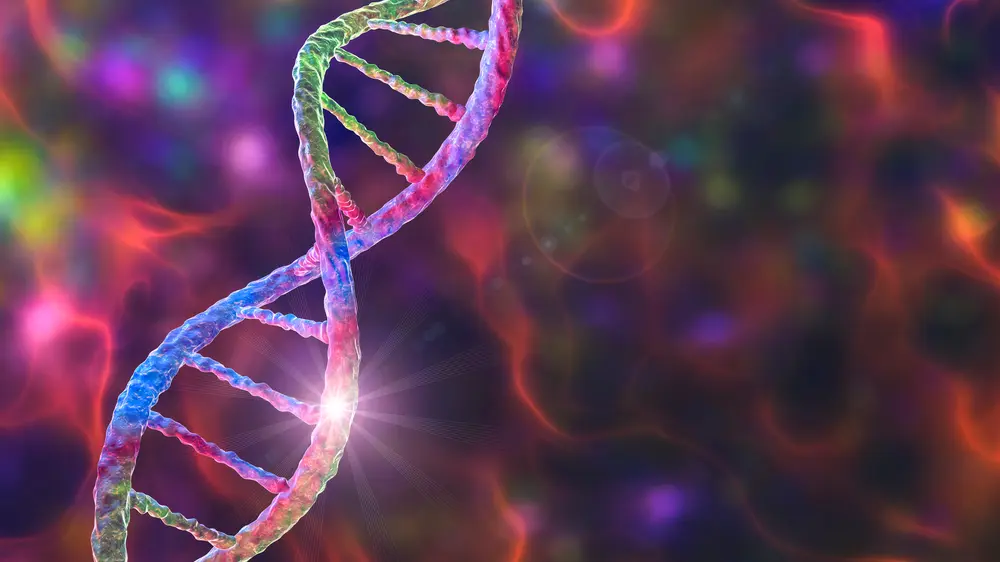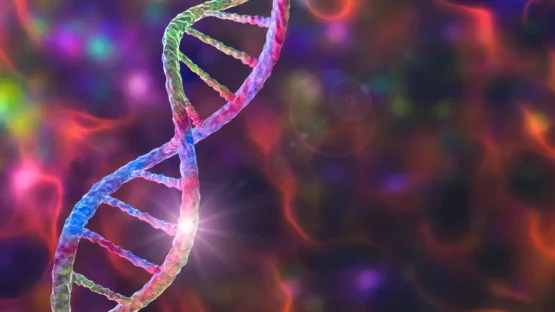Scientists studying people with autosomal dominant Alzheimer’s disease have found a genetic variant that is associated with decades of stalled onset [1].
The predictable Alzheimer’s
Scientists still do not know what causes most cases of Alzheimer’s, although certain genetic variants (most notably APOE4) have been shown to increase the risk of onset [2]. However, there are people who are extremely likely to develop Alzheimer’s. This rare variant of the disease is called autosomal dominant Alzheimer’s disease (ADAD). It is prevalent in a community of around 6,000 people living in Antioquia, Colombia, and it is directly caused by a mutation in the PSEN1 gene that produces the protein presenilin 1. Carriers of even one copy of this mutation, PSEN1-E280A, almost inevitably develop Alzheimer’s very early, at 49 years of age on average.
The Antioquia community has been extensively studied to understand the origins of Alzheimer’s and possible protective mechanisms. The most extensive study to date is COLBOS (Colombia-Boston), a longitudinal collaboration between Antioquia University and Massachusetts General Hospital in Boston. Every two years, a group of people with the PSEN1-E280A mutation travels from Colombia to Boston, where researchers take their biomarkers and conduct imaging.
Fate not sealed
Very rarely, a carrier of PSEN1-E280A seems to be protected from Alzheimer’s. In this new paper, COLBOS researchers present one such case of a man whose cognitive abilities began to decline only in his 60s, well past the age when an average mutation carrier develops full-blown Alzheimer’s. At 70, the man was diagnosed with mild cognitive impairment (MCI) which can be a harbinger of Alzheimer’s. At 72, the patient progressed to mild dementia, and at 73, to moderate dementia. He died at age 74 from pneumonia, easily outliving his mutation-carrying peers.
When he died, the man had a high amyloid beta plaque burden but a relatively low tau tangle burden in some neocortical regions of the brain. This led the researchers to suggest that his protective mechanism worked by curtailing tau pathology (tauopathy).
The researchers also mention the case of the man’s sister, who developed dementia at age 62, which was still 12 years later than expected for this population. However, while the man’s brain was donated to science by his relatives, the researchers were not able to analyze his sister’s brain, so the information about this case is limited.
The protective variants
In 2019, COLBOS researchers published the case study of another woman from the same population who was also highly protected, developing dementia only in her 70s [3]. Back then, the scientists found that she was probably protected by being homozygous for a rare mutation in the APOE gene called APOE3 Christchurch (APOEch). Her clinical picture was similar to this new case, with a high amyloid burden but even more limited tauopathy.
Initially, the researchers assumed that the brother and sister also carried the APOEch allele, but that turned out not to be the case. Instead, the researchers identified a separate protective mutation in the gene RELN, which codes for the protein reelin. The researchers named this allele RELN-COLBOS. The RELN gene is known to modulate tau phosphorylation and is closely related in its function to APOE. Reelin’s target is the protein Dab1, which plays an important role in brain development and maintenance.
Sex-specific effect
To test their findings in vivo, the researchers generated a transgenic mouse model with RELN-COLBOS knocked in. The mutation caused a gain of function for the gene, and morphological analysis revealed a statistically significant increase in the number of cerebellar neurons. Interestingly, this effect was much stronger in male mice, which is consistent with the sister being less protected than the brother. The researchers also found that the mice had to be homozygous for RELN-COLBOS to enjoy its protective benefits. However, this might be a species-specific or age-specific effect.
Finally, the researchers induced a RELN-COLBOS mutation in a mouse model of tauopathy. The mutation caused a significant reduction in tau phosphorylation in male mice compared to controls. It also alleviated the abnormal limb-clasping response, a symptom of tauopathy in mice. However, the researchers do not report conducting cognitive tests in the mice and admit that additional research into this model is needed.
Despite the encouraging results, it is still too early to say whether RELN-COLBOS or APOEch, which seem to protect against ADAD, can be used to prevent or treat the much more common sporadic Alzheimer’s.
Literature
[1] Lopera, F., Marino, C., Chandrahas, A. S., O’Hare, M., Villalba-Moreno, N. D., Aguillon, D., … & Quiroz, Y. T. (2023). Resilience to autosomal dominant Alzheimer’s disease in a Reelin-COLBOS heterozygous man. Nature Medicine, 1-10.
[2] Safieh, M., Korczyn, A. D., & Michaelson, D. M. (2019). ApoE4: an emerging therapeutic target for Alzheimer’s disease. BMC medicine, 17, 1-17.
[3] Arboleda-Velasquez, J. F., Lopera, F., O’Hare, M., Delgado-Tirado, S., Marino, C., Chmielewska, N., … & Quiroz, Y. T. (2019). Resistance to autosomal dominant Alzheimer’s disease in an APOE3 Christchurch homozygote: a case report. Nature medicine, 25(11), 1680-1683.




